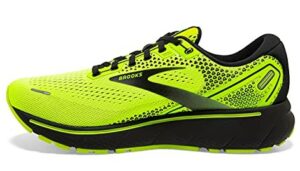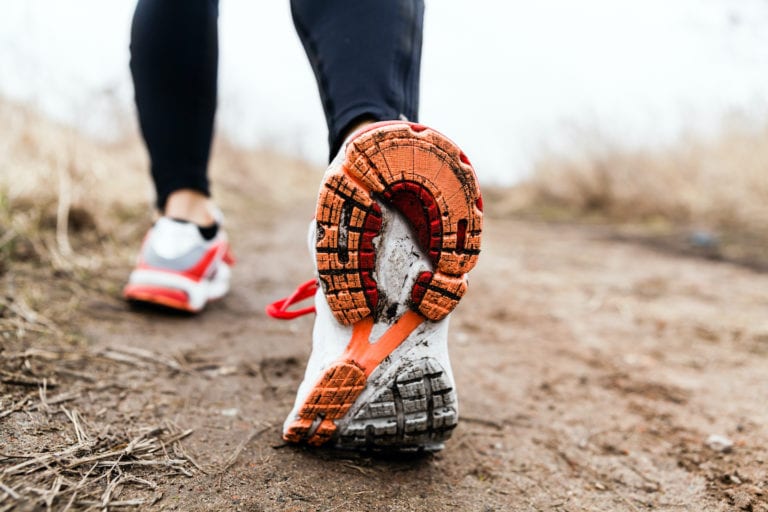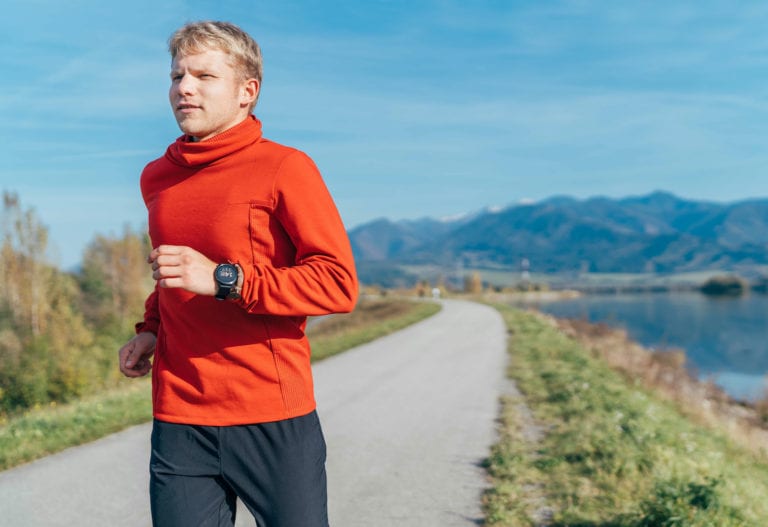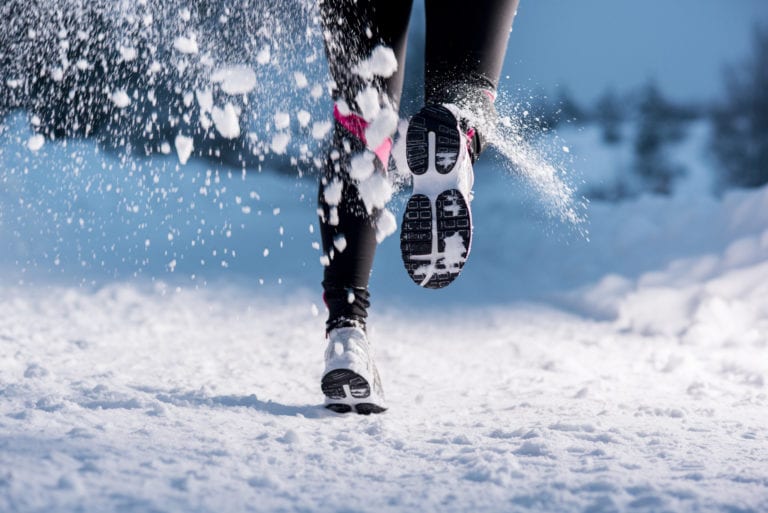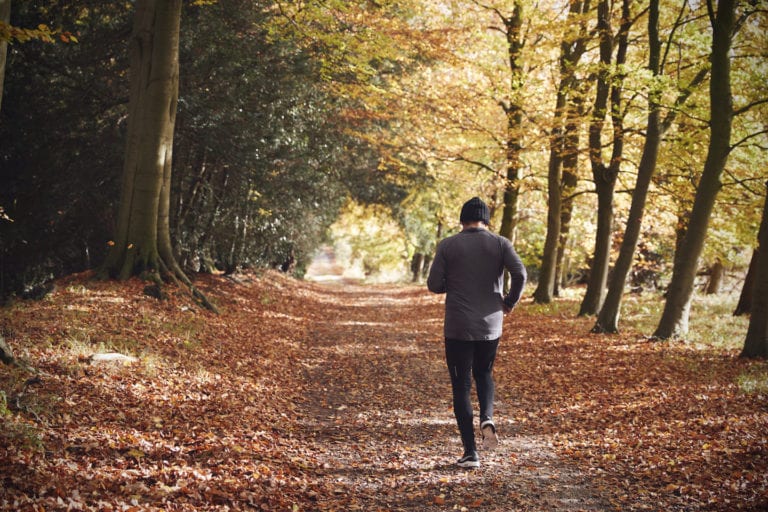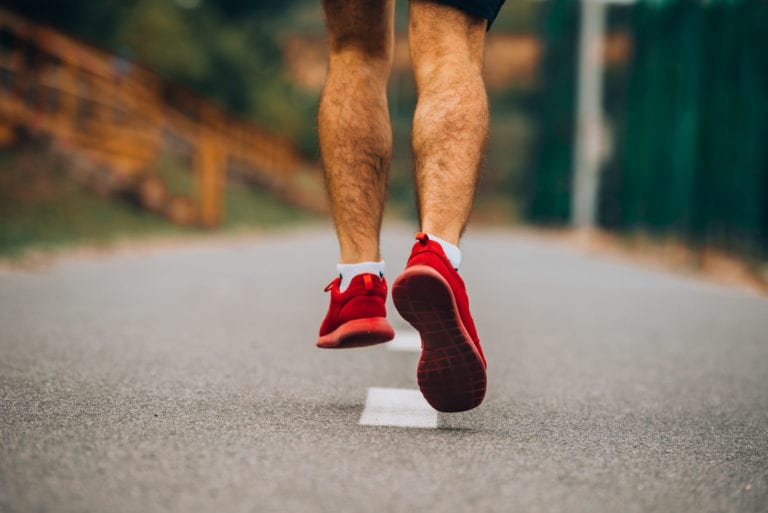When road running no longer excites you, it’s time to try trail running. Unfortunately, the transition from road to trail running can be humbling. One day you’re easily running a half marathon; the next, you’re gasping for air on dirt trails.

However, trail running offers a good challenge and has numerous benefits. To make your transition easier, we’ve prepared a guide on what you should know about trail running.
What is the difference between trail running and road running?
Unfortunately, the difference between trail and road running is marred with a huge gray area. But to simplify the argument, road running is done on paved surfaces like concrete and asphalt, while trail running is done on uneven terrain, even if it’s a mellow path in the city.
The paved surfaces in road running are hard on the joints, while the softer natural ground on trails is easier on the joints and offers a low-impact workout that engages every muscle group.
Also, road running is about setting and maintaining a rhythm and pushing your body to sustain a pace over an extended distance, while trail running is an outdoor adventure. It’s less about the rhythm and more about navigating rocky paths, crossing a bubbling stream, or climbing a steep hill, forcing you to vary your pace, stride, and effort.
Is trail running or road running harder?
Trail running is more challenging than road running because of the uneven terrain and hills, which will slow your pace and increase mental and physical exertion to navigate successfully.
The presence of hills demands an extra degree of physical effort. On a hill, a runner’s muscles, particularly their quadriceps, calves, and glutes, must work harder to carry the body up the slope. The slope also affects the cardiovascular system by making the heart beat faster and harder, building its strength and endurance over time.
Then there’s the descent, which involves a controlled, deliberate technique to prevent tripping or falling. This requires a strong core and stabilizer muscles, which proves trail running offers a better workout than road running.
Unlike the predictable, smooth surfaces on roads or treadmills, trails have rocks, roots, puddles, and streams. Trail runners must constantly stay alert and mentally engaged, carefully plotting each footfall to maintain balance and avoid injury. This mental engagement sharpens cognitive function and fosters mindfulness since runners must stay present and focused on their immediate surroundings.
How to transition to trail running
Transitioning to trail running is a journey that requires patience, preparation, and a shift in mindset. Here are key tips for a smooth transition:
Focus on time over distance
Road runners typically measure their progress and plan workouts based on distance. Because the terrain on roads is predictable and flat, it’s relatively easy to maintain a consistent pace and estimate how long a run will take.
But the hilly terrain is unpredictable, making it harder to cover the same distance in trail races as in road running. Focusing on distance may be disappointing for beginner trail runners, so instead, focus on the time spent on the trail.
Invest in a pair of trail shoes
Unlike road shoes, trail shoes are designed for technical terrain. They offer reinforced toe protection, aggressive tread patterns for better grip, and additional support structures to stabilize your foot on uneven surfaces.
Embrace the sounds of nature
Running on trails offers an opportunity to connect with nature. When you leave your headphones at home, you become more aware of your surroundings, helping you react quickly to potential hazards or wildlife.

Accept slower speeds
Trail running has many obstacles that’ll force you to slow your pace. Instead of seeing this as a setback, consider it a part of the unique challenge that trail racing offers.
Experience enhanced well-being
Trail running boosts your physical and mental health. The softer surfaces impact your joints less than concrete surfaces, and the tranquil environment helps reduce stress.
Adjust your running form
You’ll need to adapt your form to handle the diverse terrain on different types of trails. This means taking shorter, quicker strides to improve stability and control. You should also use your arms more for balance, particularly on more technical trails.
When climbing steep hills, plant your foot to protect your calves from damage, and when descending, avoid braking, as it might mess with your thigh muscles.
Walk when necessary
Walking on a trail run is a common and accepted strategy. Some hills or technical sections may be safely navigated when walking. But as your skills and strength improve, you’ll walk less.
Choosing the right trail for your skill level
When transitioning to trail running, choosing the right trail is crucial. Consider these aspects to ensure a safe and enjoyable experience:
- Assess your experience & fitness level: Start with trails that match your current fitness level and gradually increase the difficulty as your strength and endurance improve.
- Understand the trail difficulty: Consider the terrain and technicality of the trail. A flat, well-maintained trail is ideal for beginners, while experienced runners might prefer trails with steep inclines or rocky paths.
- Consider trail length & elevation change: Shorter trails with minimal elevation changes best suit beginners.
- Be aware of trail hazards & obstacles: Ensure you’re equipped to handle any potential hazards like slippery surfaces, loose rocks, narrow trails, rushing water, cliffs, or wildlife. Do your research to know what to expect and prepare for it.
- Look for engaging trail views: The beautiful scenery is part of the appeal of trail running. Choose trails that offer views you’ll enjoy.
Trail running gear & clothing
Running gear and clothing affect your comfort and performance on the trail. Here’s a rundown of accessories for trail runners:
- Trail running sneakers: The best trail running shoes feature aggressive tread patterns for better traction, reinforced toe protection for safety, and additional support to help stabilize your foot on uneven surfaces.
- Technical clothing: Clothing made from technical fabrics (like polyester or merino wool) are ideal for wicking sweat away and keeping you dry and comfortable. Avoid cotton clothing since they hold moisture and can cause chafing.
- Base layer: It sits next to your skin, regulates body temperature, and wicks away sweat. Lightweight, breathable materials that dry quickly are ideal.
- Mid layer: By trapping air close to your body, this insulating layer helps retains heat. Fleece is a common mid-layer material because it’s lightweight, breathable, and insulates well even when wet.
- Outer layer: It’s your protective layer against wind, rain, or snow. Look for water-resistant or waterproof jackets that are also breathable to prevent overheating.
- Running socks: Your socks should be made from moisture-wicking materials to keep your feet dry and prevent blisters. Some trail runners prefer higher socks to protect against debris, ticks, and mosquitoes.
- Hydration pack or belt: Trail running can lead you to areas with limited clean water sources, so carrying your own is crucial. Hydration packs or belts allow you to carry water hands-free and often have space for other essentials like snacks or a first-aid kit.
- Trail running backpack: For longer runs, a lightweight backpack can carry extra water, nutrition, clothing, and emergency gear.
- Hat and sunglasses: Protect yourself from the sun and keep sweat or rain out of your eyes with a brimmed hat or cap. Sunglasses protect your eyes from harmful UV rays and help improve visibility.
- Gaiters: These are optional but can help keep debris out of your shoes.
- Navigation tools: Depending on the trail, you might need a map, compass, or GPS device. Many trail runners use watches with built-in GPS for easy navigation.
Test your gear before hitting the trail. Your shoes should be broken in, and your clothing comfortable and non-restrictive. Having the right gear can make your trail running experience safer, more comfortable, and more enjoyable.
Trail running nutrition
Feeding your body right contributes to your performance and recovery, so you cannot afford to skimp.
At the top of the list of nutrition is hydration. When the sun is hot, water is your best friend. Carry it with you in a bottle and take sips throughout your run.
As you pound the trail, you’ll sweat profusely. Sweat is packed with electrolytes that your muscles need to function optimally. Losing these precious resources can throw your body off balance. Use sports drinks enriched with electrolytes or pop an electrolyte tablet to counteract this. They’ll help restore the sodium, potassium, and other key minerals you lose.
But before you even wear your shoes for a run, consider what you’re putting into your body. Your pre-run meal or snack should be a balance of complex carbohydrates for lasting energy and a decent amount of protein for muscle support. Fuel up about 1-2 hours before you hit the trail to allow your body time to digest.
When the run is done and dusted, it’s time to focus on recovery. This is your chance to replenish your glycogen stores, help your muscles repair, and kick-start recovery. Aim to consume carbohydrates and protein within the 30 – 60-minute window after your run for best results. You can have a recovery drink, a balanced meal, or even a quick snack like a protein bar paired with a fruit.
The golden rule of trail running nutrition is to listen to your body. It’s as unique as the trail you’re running, so paying attention to its needs is important. Use your training runs as a testing ground to find the food and strategies that fuel you, make you feel good, and maintain your energy throughout your trail runs.
Trail running technique
Mastering the technique for trail running is crucial to ensure stability and efficiency on varied terrain. In trail running, taking shorter strides helps maintain your balance and agility on uneven surfaces.

It also helps to keep your eyes 15 feet ahead to avoid tripping over obstacles. Do not be tempted to stare at your feet. Swinging your arms will relax your core and maintain balance.
What is good trail etiquette?
Good trail etiquette for running includes yielding to uphill runners and hikers when descending because they have the right of way. Also, stay on the trail to protect the environment and respect others by maintaining a quiet and peaceful atmosphere.
Trail etiquette ensures everyone enjoys their time in nature without disturbance. Giving way to uphill runners and hikers makes sense considering the momentum and effort required to ascend. Interrupting this can break their rhythm and make their task harder. Also, trail runners should be respectful and considerate when overtaking hikers being sure to give them a friendly alert of your presence before passing.
How do you stay safe while trail running?
Ensuring safety while trail running involves these crucial steps:
- Familiarize yourself with the trail: Understand the terrain, potential hazards, and escape routes.
- Find a running buddy: Running with a partner can increase safety and enjoyment.
- Keep someone informed: Let someone know your running plan and route, and include the expected return time.
- Carry identification: This is essential in case of emergencies.
- Prepare for the environment: Know the weather forecast and be aware of local wildlife.
- Pack hydration and nutrition: Always carry enough water and energy-boosting snacks.
- Avoid headphones: Stay aware of your surroundings for potential hazards.
- Dress appropriately: Wear gear suited to the weather and terrain, and consider visibility.
You can learn more about trail running safety here.
Common trail running injuries
Although enjoyable and beneficial to your body, it carries some risk of injury. Awareness of these risks and how to mitigate them helps you avoid them.
Risk factors of trail running injuries
The risk of injury when trail running increases when a runner neglects warm-up and doesn’t have a specialized running plan. Also, double training in a day and training on asphalt increases the chances of injury.
Common trail running injuries
Some injuries you might hear of a lot of in this industry include:
- Metatarsalgia: This is a pain in the ball of your foot, often caused by running on hard surfaces, overuse, or wearing shoes without enough cushioning.
- Achilles tendonitis: This is the inflammation of the Achilles tendon, which connects your calf muscles to your heel bone. It’s commonly caused by overuse, particularly in sports that involve running and jumping.
- Ankle sprains: These are common in trail running due to the trail having uneven ground. A misstep can cause the ankle to roll, stretch, or tear ligaments.
- Blisters: These are caused by friction between your foot and your shoe. They’re more likely to occur if your shoes are too tight, loose, or wet.
- ITB syndrome (Iliotibial Band Syndrome): This condition is caused by inflammation of the iliotibial band, a thick band of tissue that runs from the hip down the outside of the thigh and knee to the top of the shinbone. It’s often caused by repetitive knee bending in activities like running.
- Plantar Fasciitis: This is the inflammation of the plantar fascia, a tissue running across the bottom of your foot, connecting your heel to your toes. It’s often caused by high-impact activities like running.
Enjoy the transition
Trail running is an exciting and enriching sport that requires a thoughtful approach. The journey will involve learning, adapting, and overcoming new challenges – but the rewards can be immense.
Whether it’s the sense of achievement from conquering a tough trail, the serenity of running through a quiet forest, or the thrill of exploring new terrain, trail running has something to offer every runner willing to venture off the beaten path.







